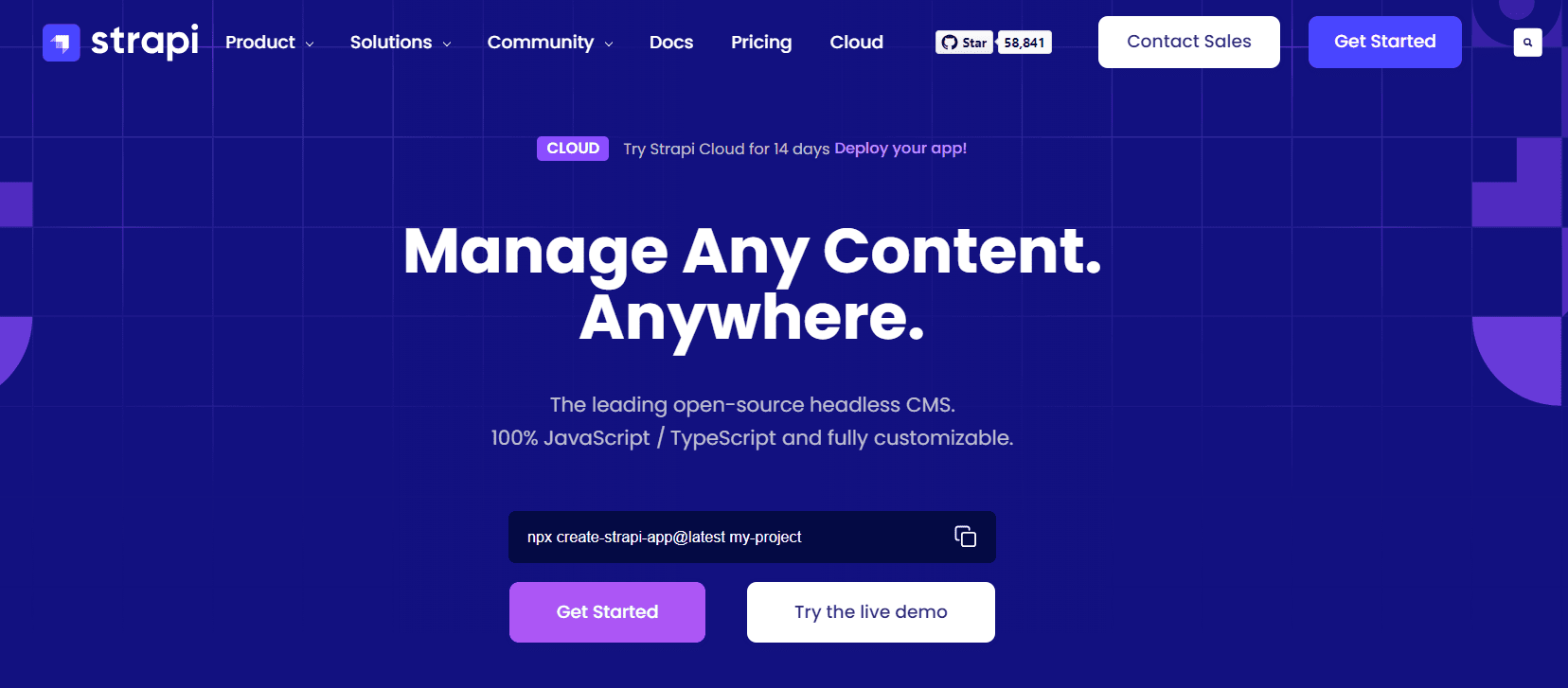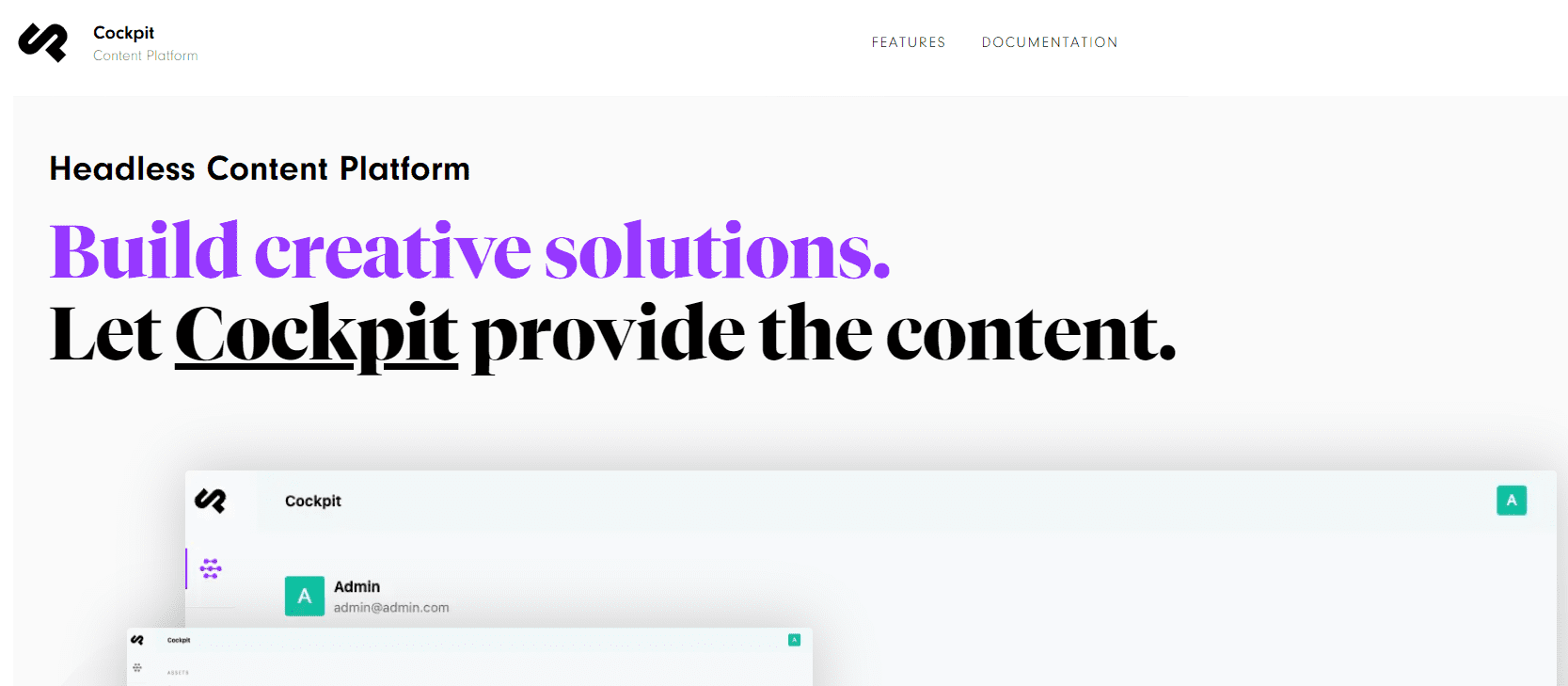Developers are increasingly choosing Vue.js because of its performance, adaptability, and ease of use in the constantly evolving field of web development. Integrating with a headless CMS (Content Management System) becomes essential for managing content for Vue.js applications. This article explores best headless CMS for Vue.js and discusses its benefits, features, and applicability for developers.
What is Headless CMS
A headless content management system (CMS) is a back-end-only content platform that allows you to manage and organize content using a separate front-end presentation layer.
Unlike traditional CMS solutions like WordPress or Drupal, which provide both back-end content management and front-end website rendering, a headless CMS purely focuses on the back-end CMS functionality. It handles content modeling, management, APIs, and content delivery.
Since a headless CMS doesn’t control any front-end display logic, website rendering is handled separately by the presentation layer. This decoupled approach provides more flexibility and control in displaying content across various devices, channels, and platforms.
Importance of Headless CMS for Vue.js Apps
Vue.js has emerged as a popular open-source JavaScript framework for building dynamic single-page applications and client-side web interfaces. It enables reactive front-end experiences with fast performance and a small footprint.
Combining a headless CMS with Vue.js apps offers the best of both worlds – professional content management capabilities and a robust front-end framework tailored for web interfaces.
Some key reasons why a headless CMS approach is advantageous for Vue.js applications include:
Focused on Front-End Strengths
With content management and APIs handled by the headless CMS, Vue.js can focus purely on its strengths – building smooth reactive UIs with lightning-fast rendering optimized for user experience.
No Complex Server Configurations
Vue.js developers avoid complex server setups managing databases and back-end logic since the headless CMS provides simple content APIs to access organized content.
Easily Reusable Components
Vue’s component-based architecture integrates beautifully with headless content exposed via APIs to create reusable display components. Content can be refreshed via API calls without impacting component design.
Responsive and Cross-Platform Friendly
Vue’s responsive capabilities and headless content flexibility create apps tailored for any device or platform from one content source.
Streamlined App Development
With content management offloaded to the CMS, Vue developers can better streamline the app-building process and bring products to market faster.
Choosing the Best Headless CMS for Vue.js Projects
Vue.js has quickly become a top choice for building reactive user interfaces thanks to its approachable API, blazing performance, small footprint, and extensive ecosystem. Vue integrates beautifully with headless content management systems to maximize developers’ efficiency.
A headless CMS provides centralized and decoupled content repositories exposed via APIs for display across devices. The presentation layer is handled separately from content management.
What headless CMS best fits Vue developers needing robust content infrastructure? Here are the top options to consider for your next Vue.js project:
Strapi
Strapi is a popular open-source system for managing website content. It’s written in JavaScript, a type of coding language. It has many tools that help developers create a robust content management system (CMS) without a specific front-end design.
With Strapi, developers can use different front-end frameworks like React, Vue, or Angular to interact with the CMS through either REST or GraphQL APIs. It can work with various databases such as:
- MySQL
- SQLite
- MongoDB
- Postgres
One of the cool things about Strapi is how easy it is to add extra features through plugins. These are like add-ons that developers can create and attach to their CMS in just a few moments. Plus, they can use other helpful tools while coding and choose their favorite code editor.
Security is essential, and Strapi takes care of it by letting developers set specific roles and permissions for who can access the APIs. It means only authorized users can get into the system. If you’re concerned about privacy, you can host Strapi on your own server to keep control over your data.
For the people creating content, Strapi provides a tool called “Content Types Builder.” This makes it simple for them to make and share fantastic pages. And if you’re dealing with content in multiple languages, Strapi has features to help with that, too, making it easy to manage content in different languages.
Contentful
Contentful is a unique tool that helps us effectively manage our website content. It’s like a storage space in the cloud where we keep all the words, pictures, and other things you see on our website. It’s called “headless” because it has no specific design or layout – it’s flexible and can work with any website.
One of the great things about Contentful is that it’s designed to be fast. It means when you visit our website, the words and pictures can load quickly, making your experience smoother.
Contentful has many helpful tools for people who create content for our website. It’s easy to use and supports different types of content like text, images, and even dates and locations. It also lets us create content in various languages and ensures everything stays secure.
Moreover, It can work with different ways of getting information from the internet, like REST and GraphQL. It helps developers work with it more easily. Plus, it’s designed to work well on mobile phones, ensuring our website looks good and works smoothly, no matter your device.
Sanity
Sanity CMS provides a comprehensive content platform for creating highly customizable and flexible CMS solutions. It comprises various vital elements such as Sanity Studio, Content Lake, and Image Pipeline.
Sanity Studio, built on React and offered as an open-source project, serves as the hub where content models are defined. It empowers users to tailor their CMS according to their needs by incorporating custom components and developing plugins.
On the other hand, Content Lake is a fully managed cloud-based component designed for storing and retrieving content through the Sanity API.
In terms of security and privacy, Sanity offers robust controls, enabling users to assign roles to different users, thereby granting tailored access to content. Additionally, the platform supports Single Sign-On (SSO), streamlining the authentication process through integration with third-party accounts.
Noteworthy features also include an image pipeline facilitating on-demand transformation of images, as well as support for GraphQL and GROQ for efficient document querying.
Cockpit CMS
Cockpit is a freely available, effortless-to-set-up, and open-source headless CMS solution. Despite its simplicity, Cockpit ensures users a seamless content creation journey.
By opting for self-hosting, users retain absolute control over their data. Notably, its user-friendly UX design empowers developers and content creators to concentrate on their tasks, making it a favored option among non-technical creatives.
The CMS features a content app facilitating centralized content management with seamless distribution across various channels. Additionally, it boasts typical headless CMS functionalities such as localization and API security with versatile user role configurations.
Moreover, Cockpit offers the flexibility to enhance its capabilities through diverse add-ons like webhooks and layouts.
Directus
Directus represents an Open Data Platform leveraging JavaScript and harnessing the power of Node.js and Vue.js 3 for heightened performance. Primarily, it serves as a headless CMS, enabling content management across multiple channels such as websites, applications, kiosks, and digital signage.
Directus simplifies the creation of REST and GraphQL APIs within minutes. A notable highlight is its extensive database support, encompassing modern cloud-based databases like OracleDB, CockroachDB, MariaDB, and Aurora. Furthermore, it provides authentication mechanisms, including secure two-factor authentication coupled with access control and asset management features.
Enhancing the content creation experience, Directus offers visualization tools, customizable dashboards, and a range of charts alongside numerous integrations and presentation options.
Prismic
Prismic takes a refined design-driven approach to headless CMS, ideally suited for crafting polished Vue experiences. With sophisticated content modeling capabilities, Prismic is frequently used across premium brand projects.
Why Prismic Aligns Well with Vue Apps:
- Elegant UI provides effortless content updates
- Custom types, validations, and permissions
- Tailored for integration with modern JS frameworks
- GraphQL + REST APIs with extensive capabilities
- Focus on polished experiences led by design
- Integrates across key platforms like Vue Storefront
Trusted by Vue-based sites like the Grammys and Louis Vuitton, Prismic’s refined interface simplifies content creation so Vue developers can excel at building stunning front-end experiences quickly.
Advantages of Using Headless CMS With Vue.js
Let’s explore the major advantages of using a headless content management system together with Vue.js frameworks:
1. Content Once, Display Everywhere
With headless CMS, content is centralized in one back-end repository and then accessed via APIs to display across any device, platform, or channel. This omnichannel content is essential for consistent brand experiences across the web, mobile, IoT devices, digital signage, and more.
Vue’s strong cross-platform abilities beautifully showcase content from a headless source. Vue developers can even create libraries of display components for “build once, reuse everywhere” efficiency.
2. Always Up-To-Date Content
A headless content hub keeps information in one single source of truth that stays continuously up-to-date. Content flows downstream instantly to any front-end touchpoint via API calls.
Vue apps easily integrate real-time content preview from CMS editing workflows using live API requests. Content stays perpetually fresh across experiences.
3. Faster Iterations and Delivery
With content and presentation decoupled, Vue developers can build and iterate on front-end apps faster without back-end dependencies or vendor lock-in. Streamlined workflows and reusable components accelerate product delivery and reduce time-to-market.
Code can also be version-controlled since templates and components have no hardcoded content. It enables rapid iterations.
4. Personalized Experiences
Sophisticated APIs exposed by modern headless CMSs allow for fine-grained filtering and business logic customization. Combined with Vue’s functionality for crafting tailored UIs, this unlocks hyper-personalized experiences.
5. Future-Proof Flexibility
With content, business logic, and display layers fully separated, front-end apps stay shielded from back-end migrations. If swapping headless CMSs down the road, only API calls adapt without impacting the Vue application design.
Vue’s loose coupling and component composition also minimize ripple effect changes. Overall, combining decoupled Vue apps with headless CMSs future-proofs stacking for longevity.
The Verdict
Choosing the best headless CMS for Vue.js apps depends on project needs and developer preferences. Options like Strapi, Contentful, Sanity, Cockpit CMS, Directus, and Prismic offer robust features and flawless Vue.js integration. With a suitable CMS, Vue.js developers can enhance content management and user experiences, unlocking new possibilities in app development.










